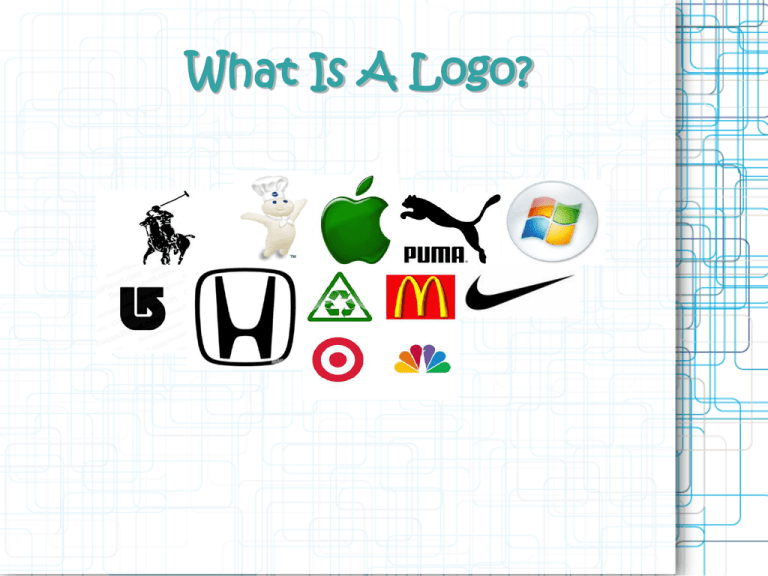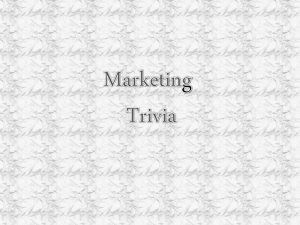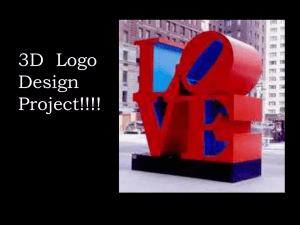What Is A Logo? - Summit Alternative School
advertisement

What Is A Logo? What Is A Logo? Logos are used to identify The logo is one aspect of a company’s commercial brand, and its shapes, colors, fonts, and images usually are strikingly different from other logos in the same market niche “A logo is a flag, a signature...a street sign. A logo does not sell (directly), it identifies. A logo is rarely a description of a business. A logo derives meaning from the quality of the thing it symbolizes, not the other way around. A logo is less important than the product it signifies; what it represents is more important than what it looks like. The subject matter of a logo can be almost anything” (Paul Rand). What Makes A Good Logo? A good logo... Is distinctive Is appropriate Is practical Is graphic and simple in form Conveys an intended message Should be able to be printed at any size and, in most cases, be effective without color A great logo essentially boils down to two things: Great concept Great execution. 5 Principles of Effective Logo Design Remember, a good logo is distinctive, appropriate, practical, graphic and simple in form, and it conveys the owner’s intended message. You should follow the five principles below to ensure that your design meets all of these criteria: Simple Memorable Timeless Versatile Appropriate Simple Simplicity makes a logo design easily recognizable, versatile and memorable. Good logos feature something unexpected or unique, without being “overdrawn.” Memorable Following closely on this principle of simplicity is that of memorability. An effective logo design should be memorable, which is achieved by keeping it simple yet appropriate. Timeless An effective logo should be timeless. Will yours stand the test of time? Will it still be effective in 10, 20 or 50 years? “Leave trends to the fashion industry. Trends come and go, and when you’re talking about changing a pair of jeans or buying a new dress, that’s fine, but where your brand identity is concerned, longevity is key. Don’t follow the pack. Stand out.” — David Airey Versatile An effective logo works across a variety of media and applications. Ask yourself, is your logo still effective if it is printed… In one color? In reverse color (i.e. light logo on dark background)? The size of a postage stamp? As large as a billboard? One way to create a versatile logo is to begin designing in black and white. This allows you to focus on the concept and shape, rather than colour, which is subjective in nature. Appropriate How you “position” the logo should be appropriate for its intended audience. For example, a child-like font and color scheme would be appropriate for a logo for a children’s toy store, not so much for a law firm. “A logo doesn’t need to say what a company does. Restaurant logos don’t need to show food, dentist logos don’t need to show teeth, furniture store logos don’t need to show furniture. Just because it’s relevant, doesn’t mean you can’t do better. The Mercedes logo isn’t a car. The Virgin Atlantic logo isn’t an airplane. The Apple logo isn’t a computer. Etc.”— David Airey Source: “Vital Tips For Effective Logo Design” By Jacob Cass (http://www.smashingmagazine.com/2009/08/2 6/vital-tips-for-effective-logo-design/)






